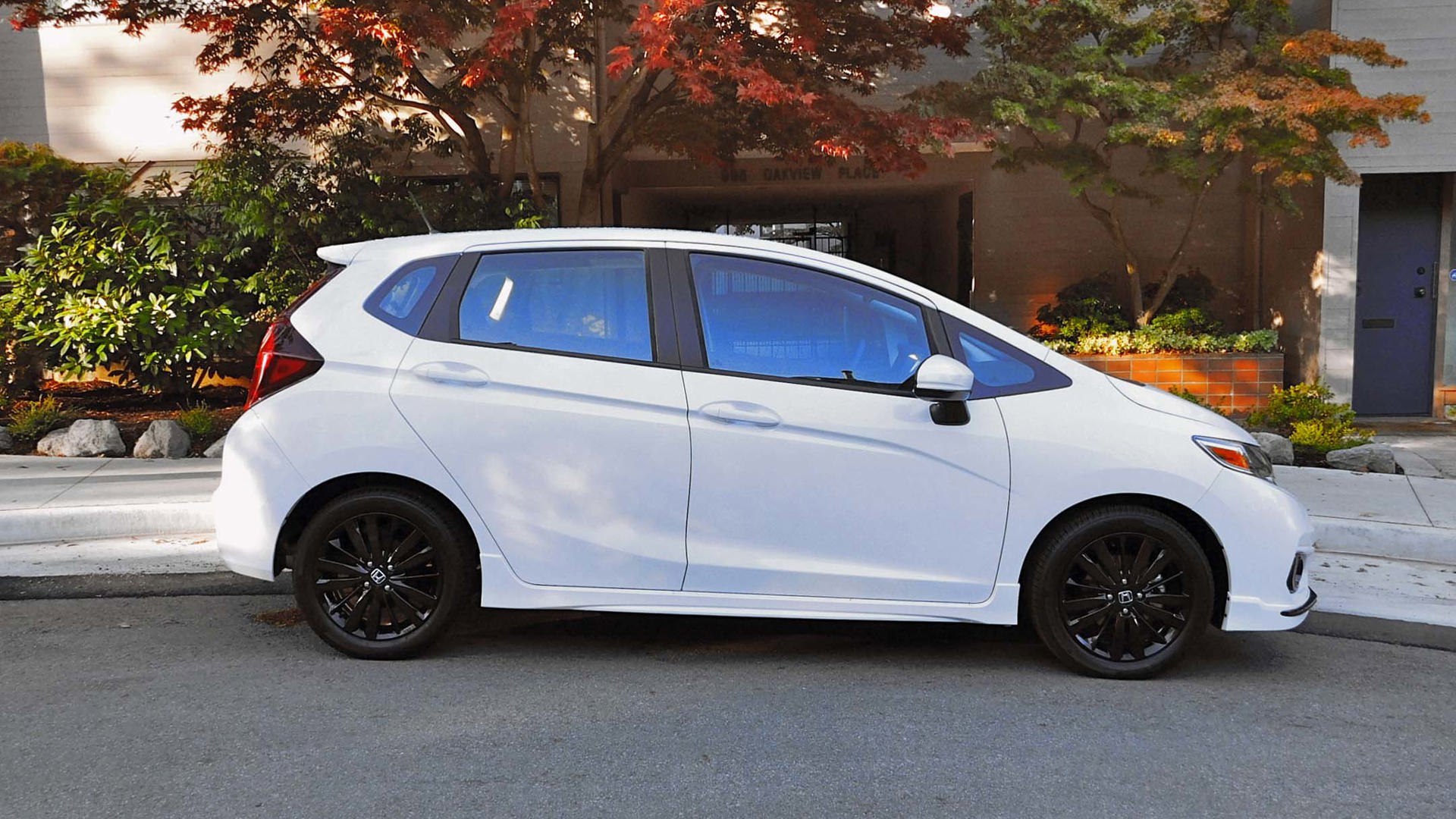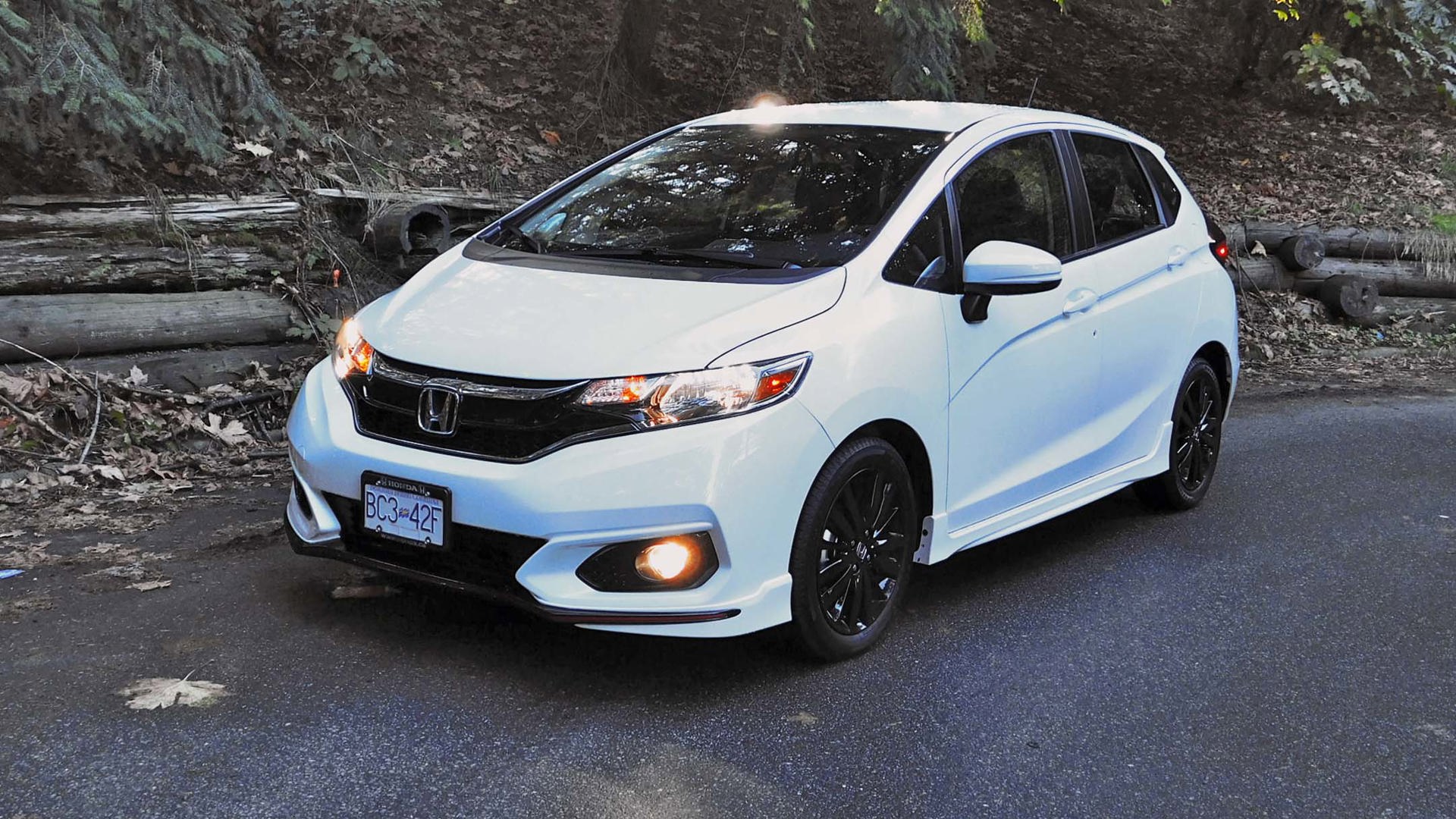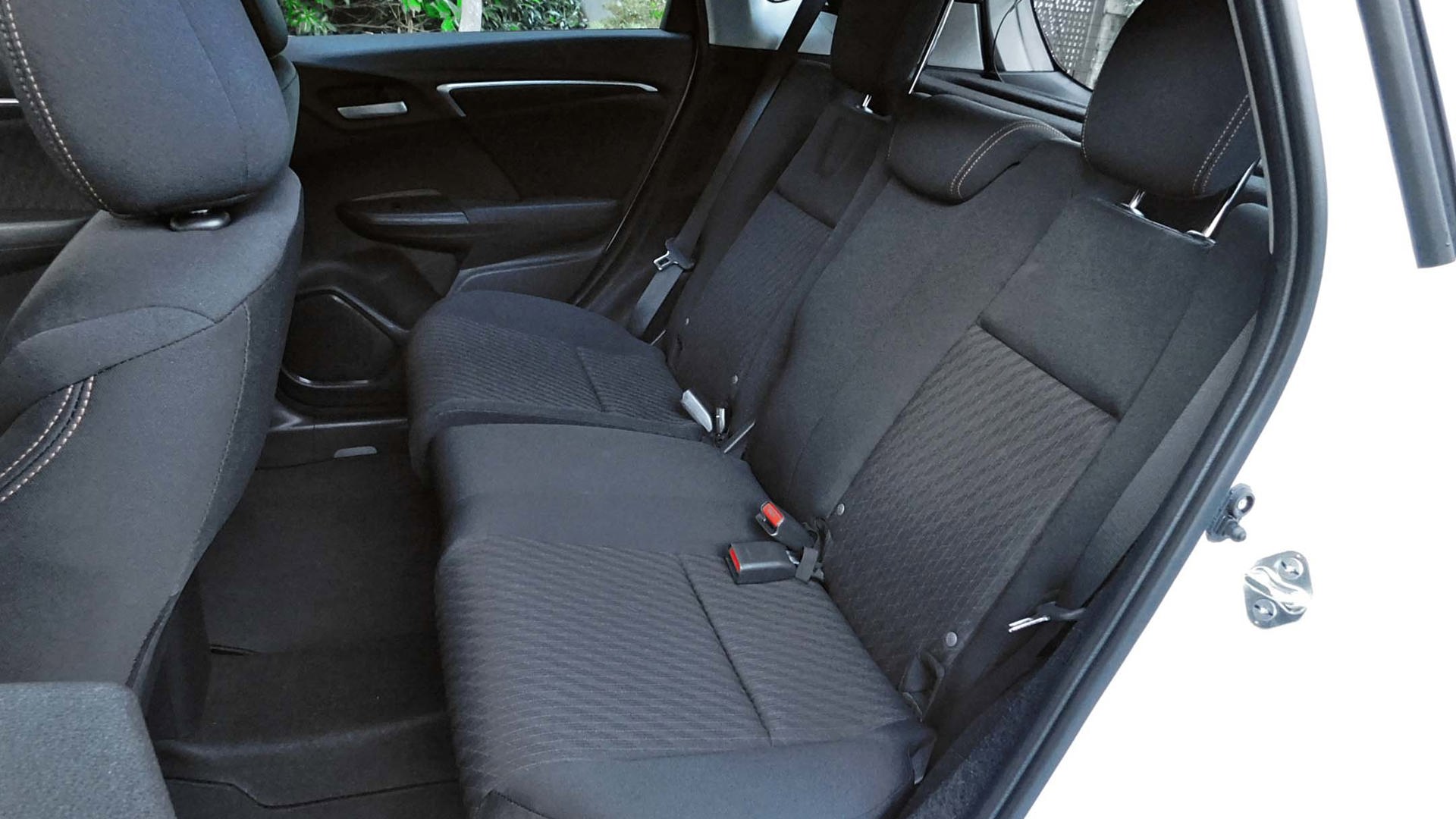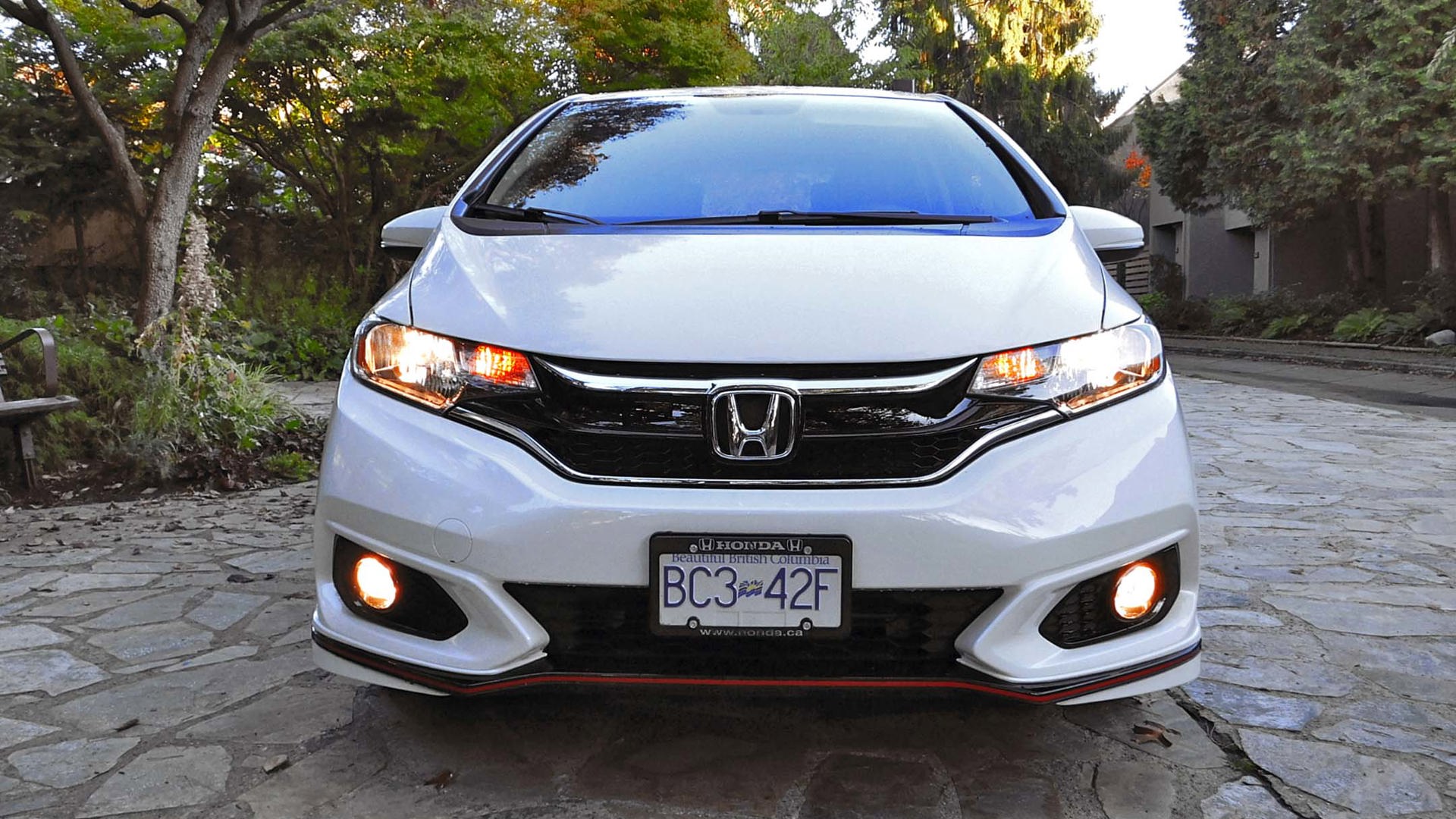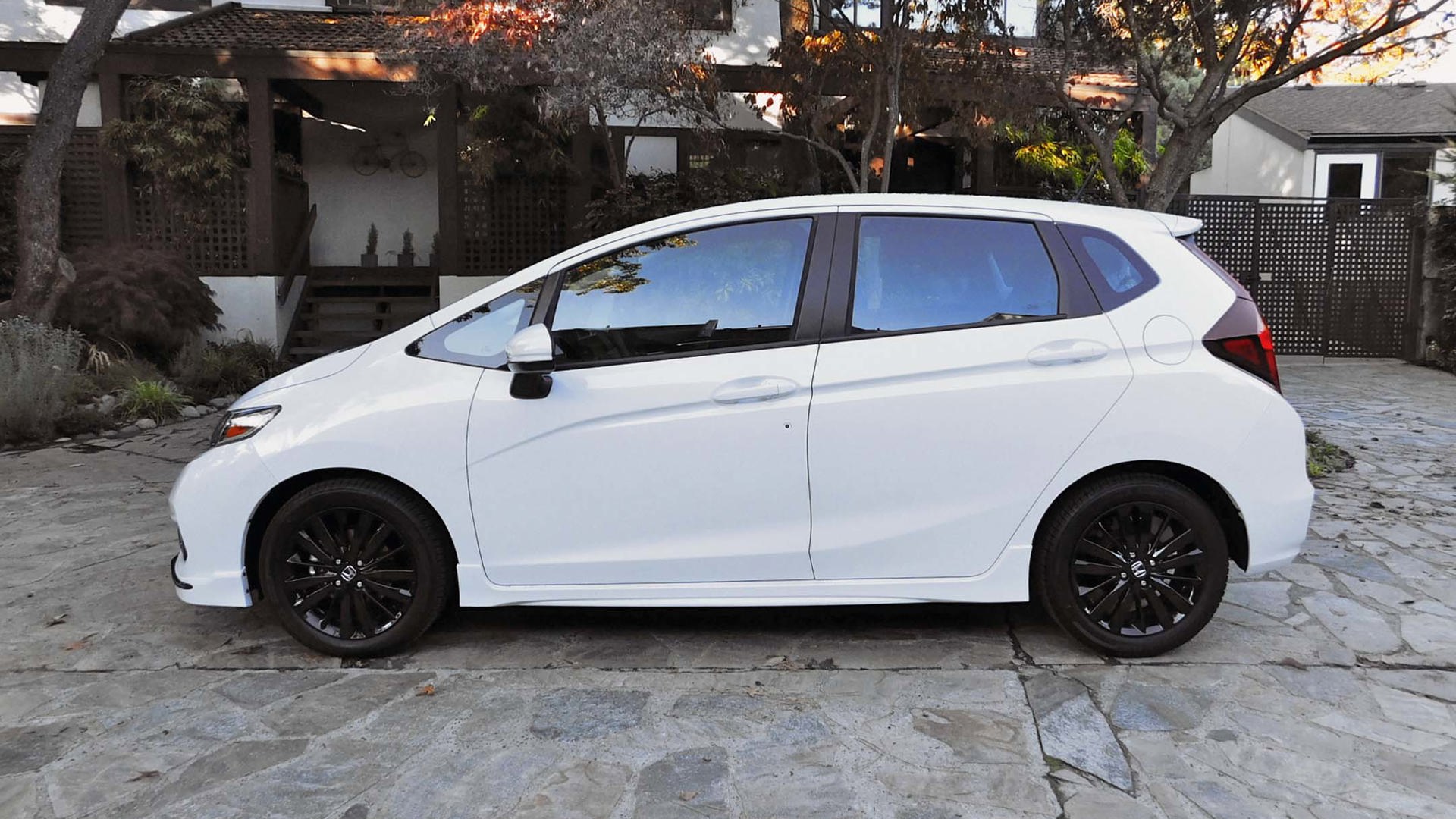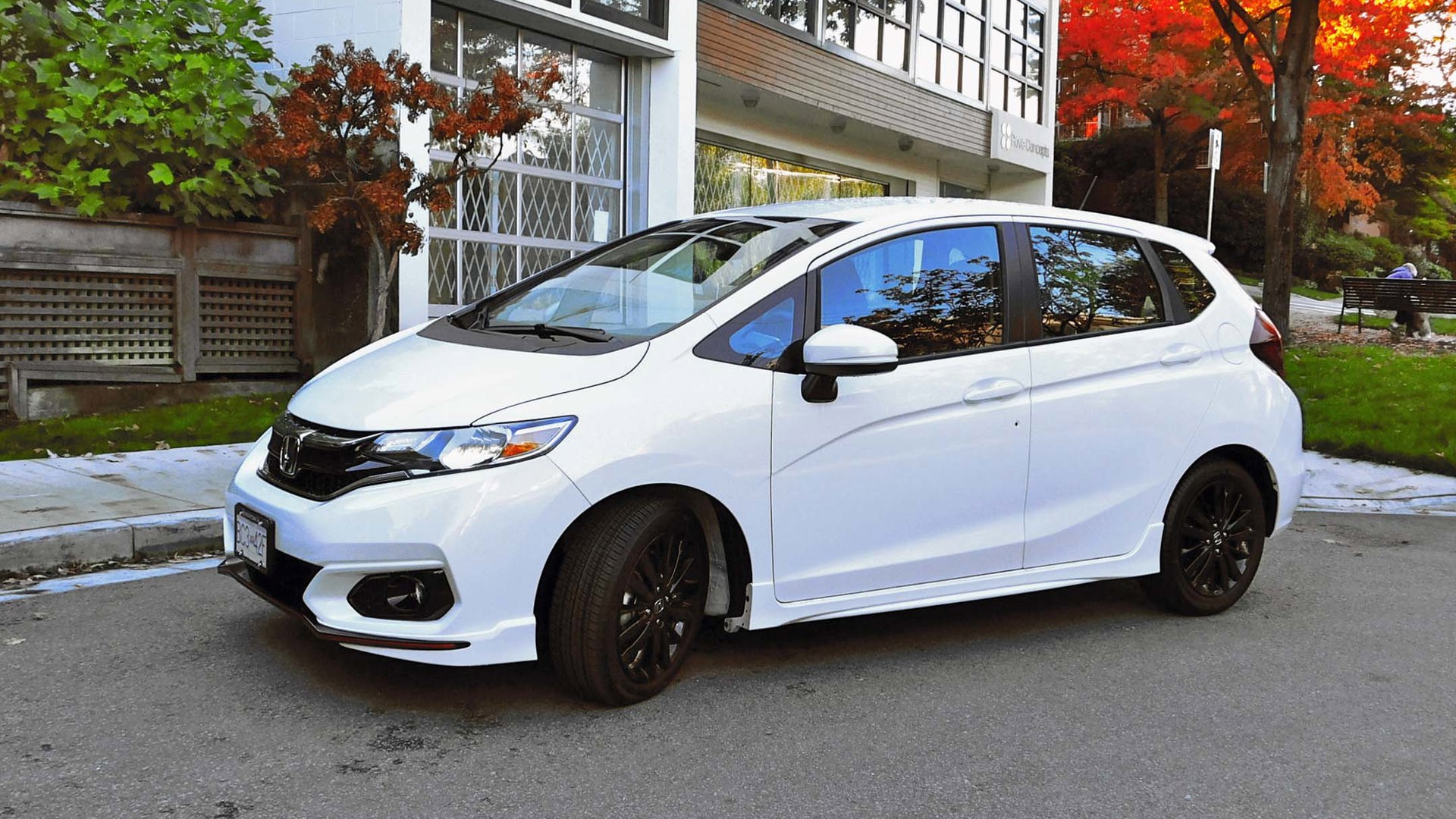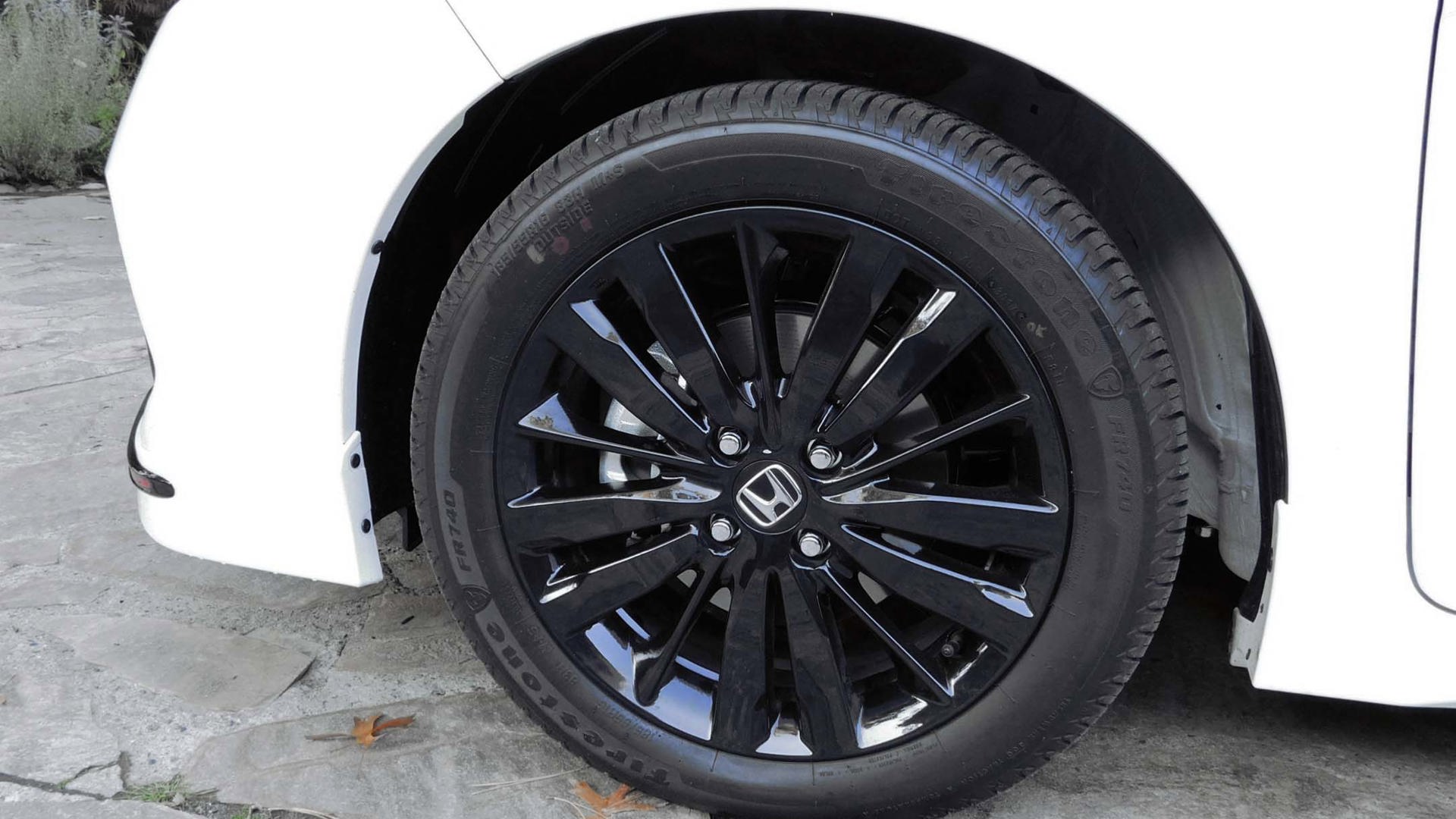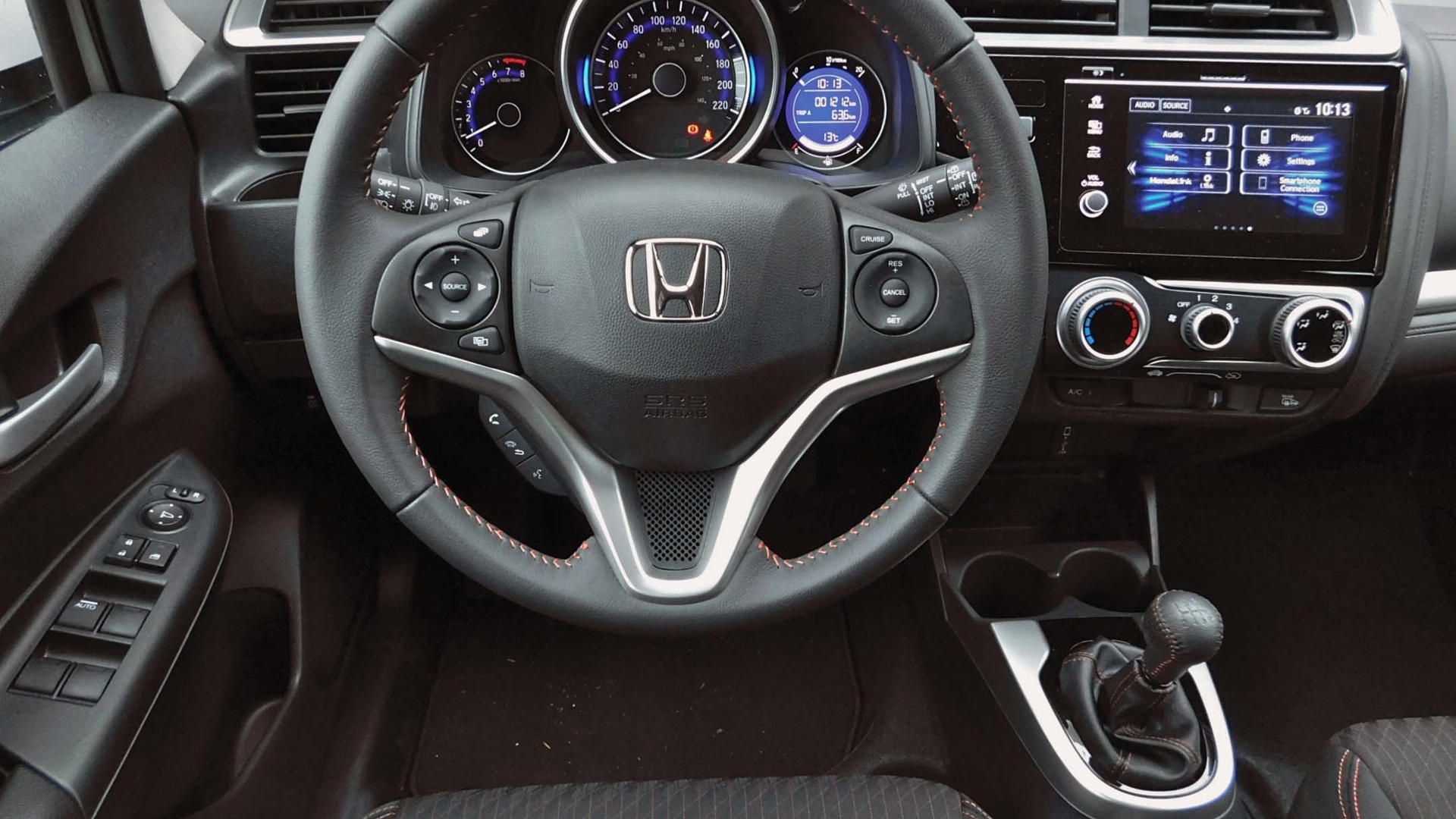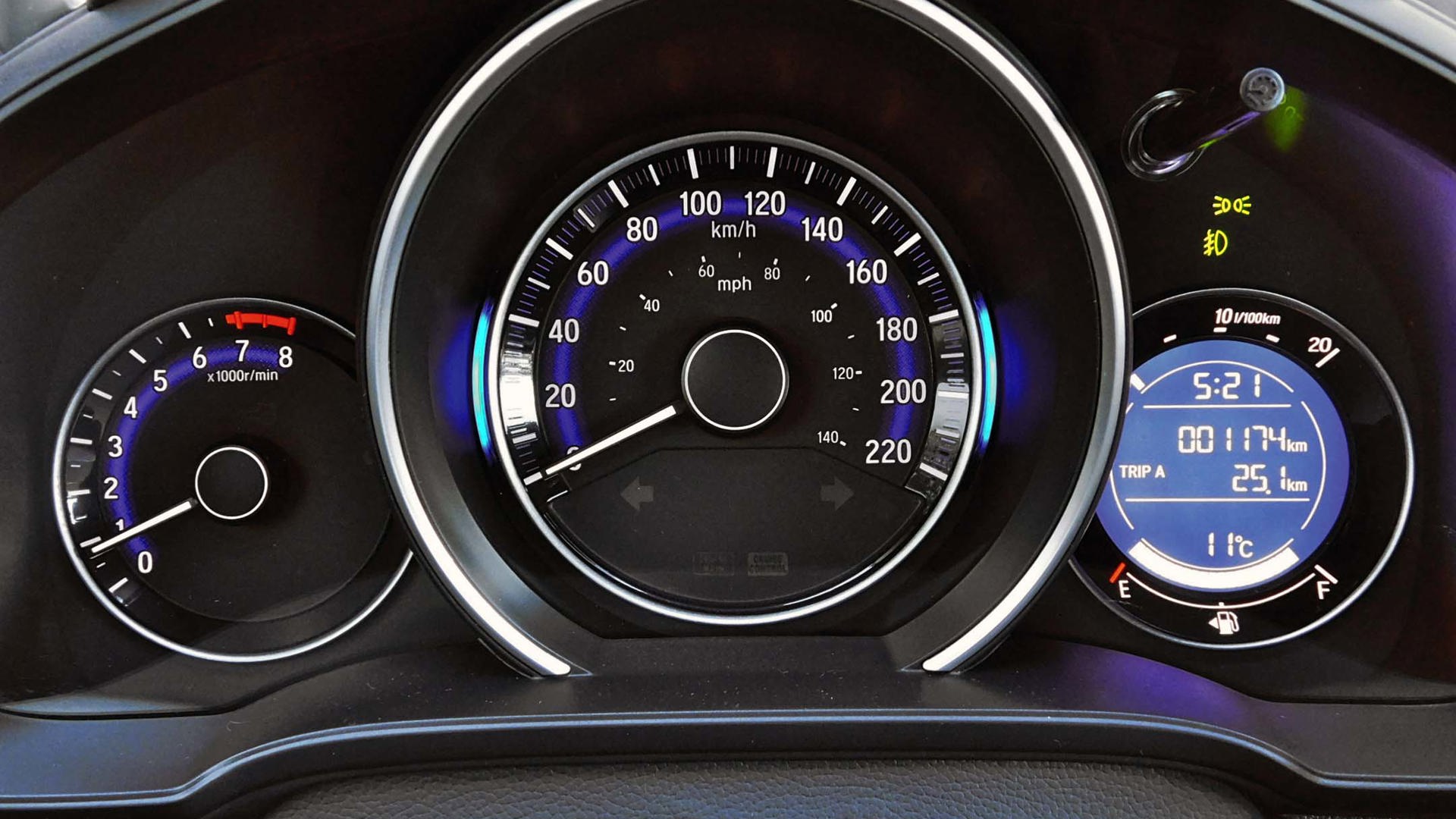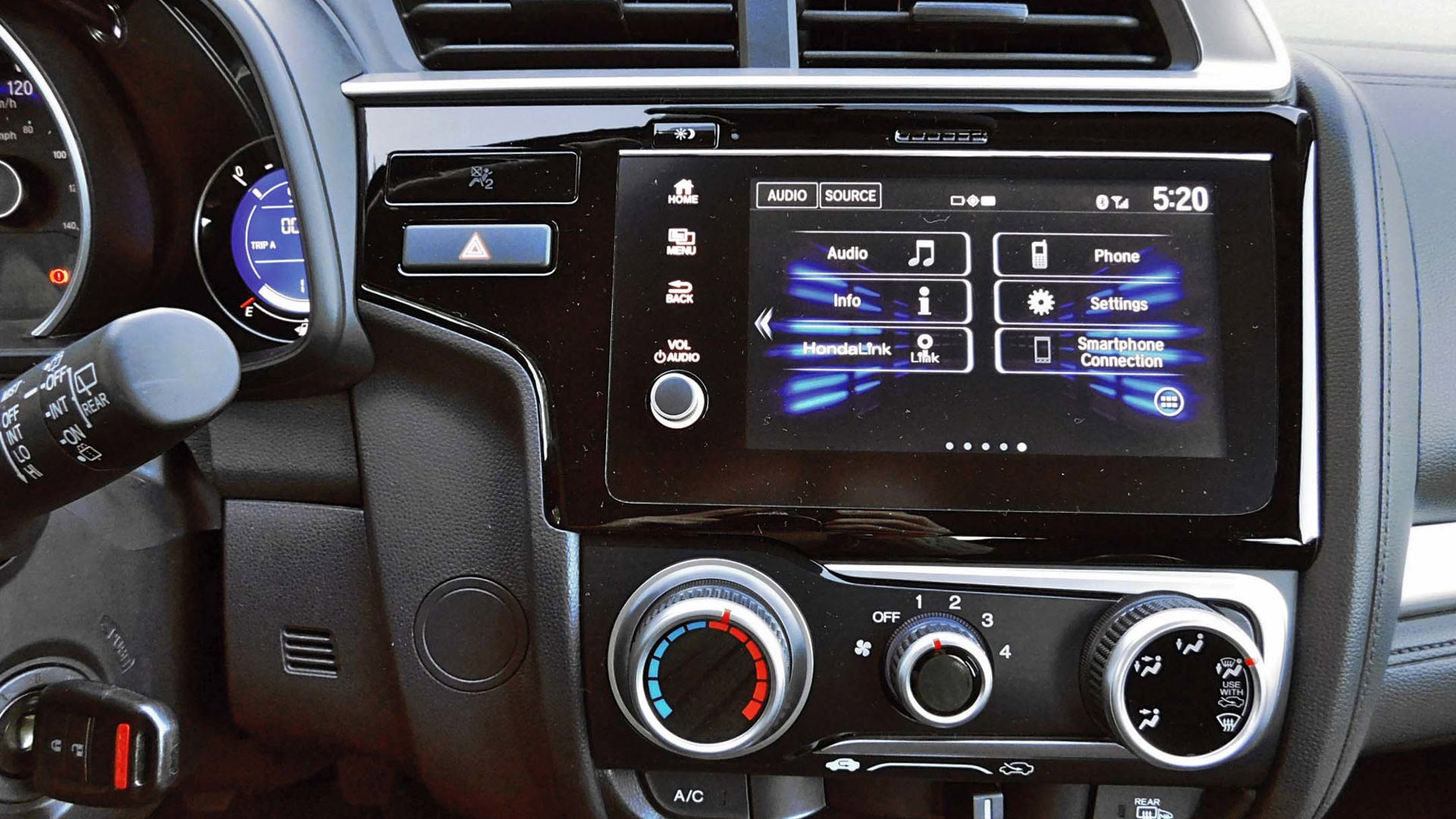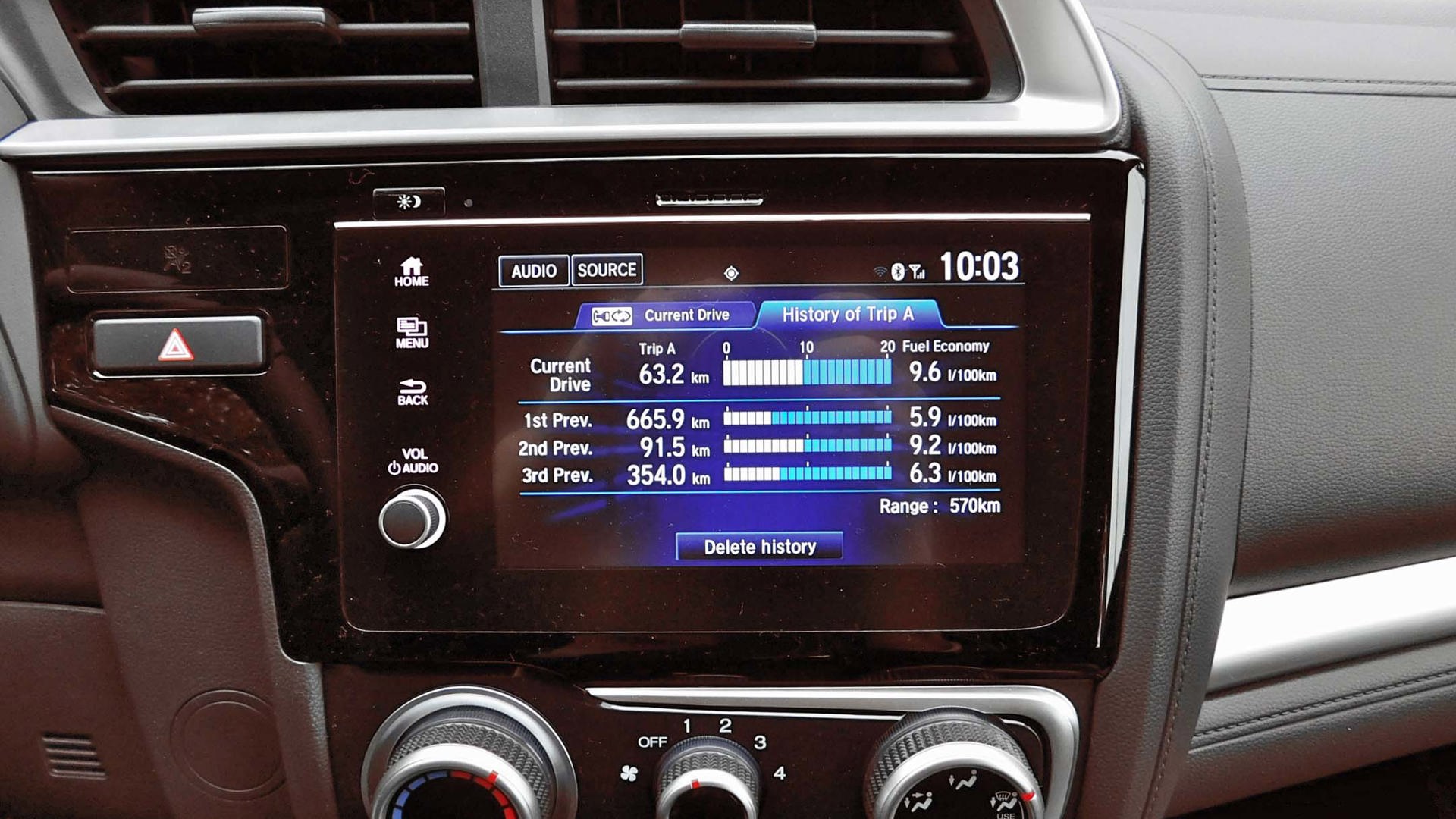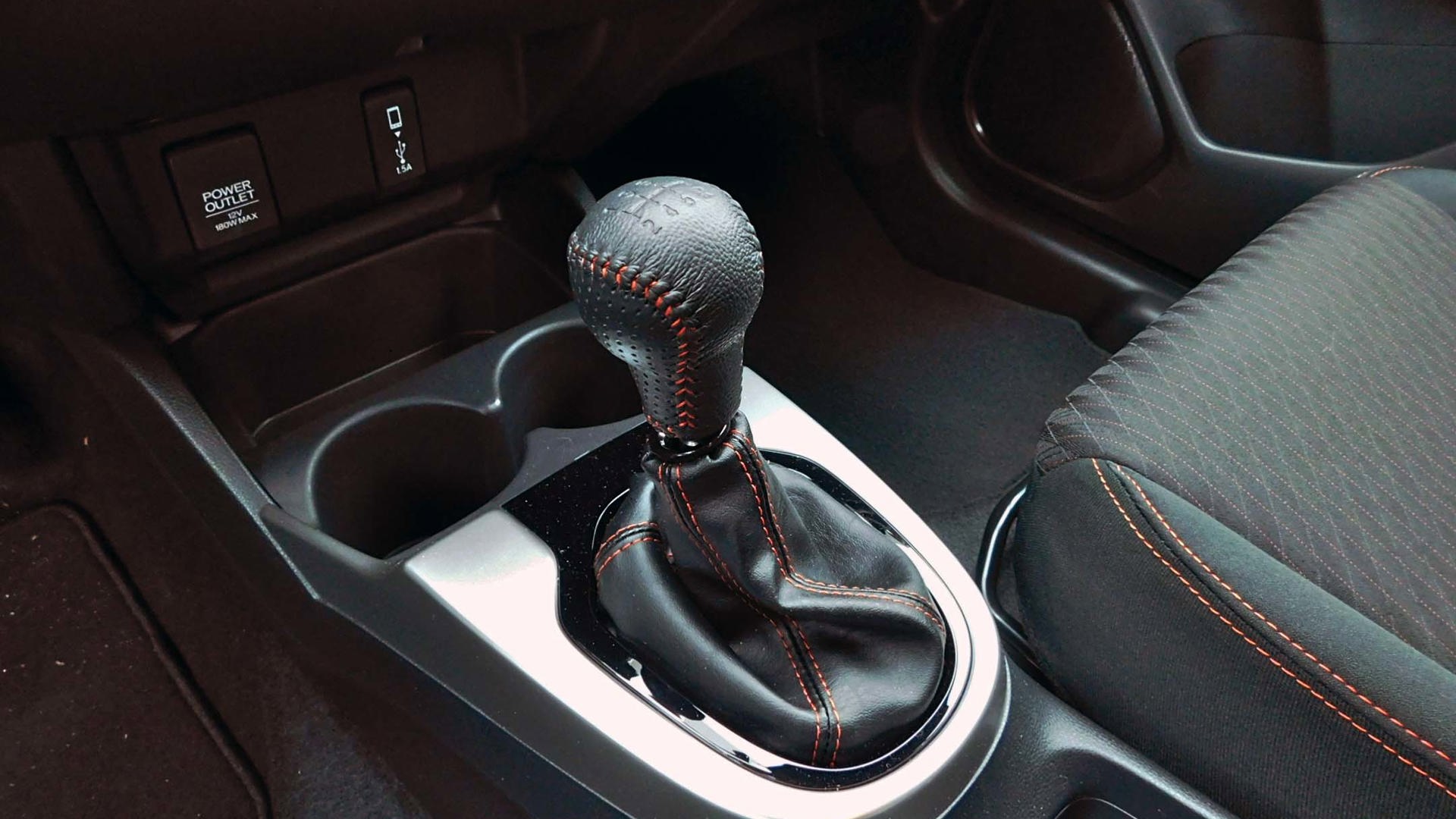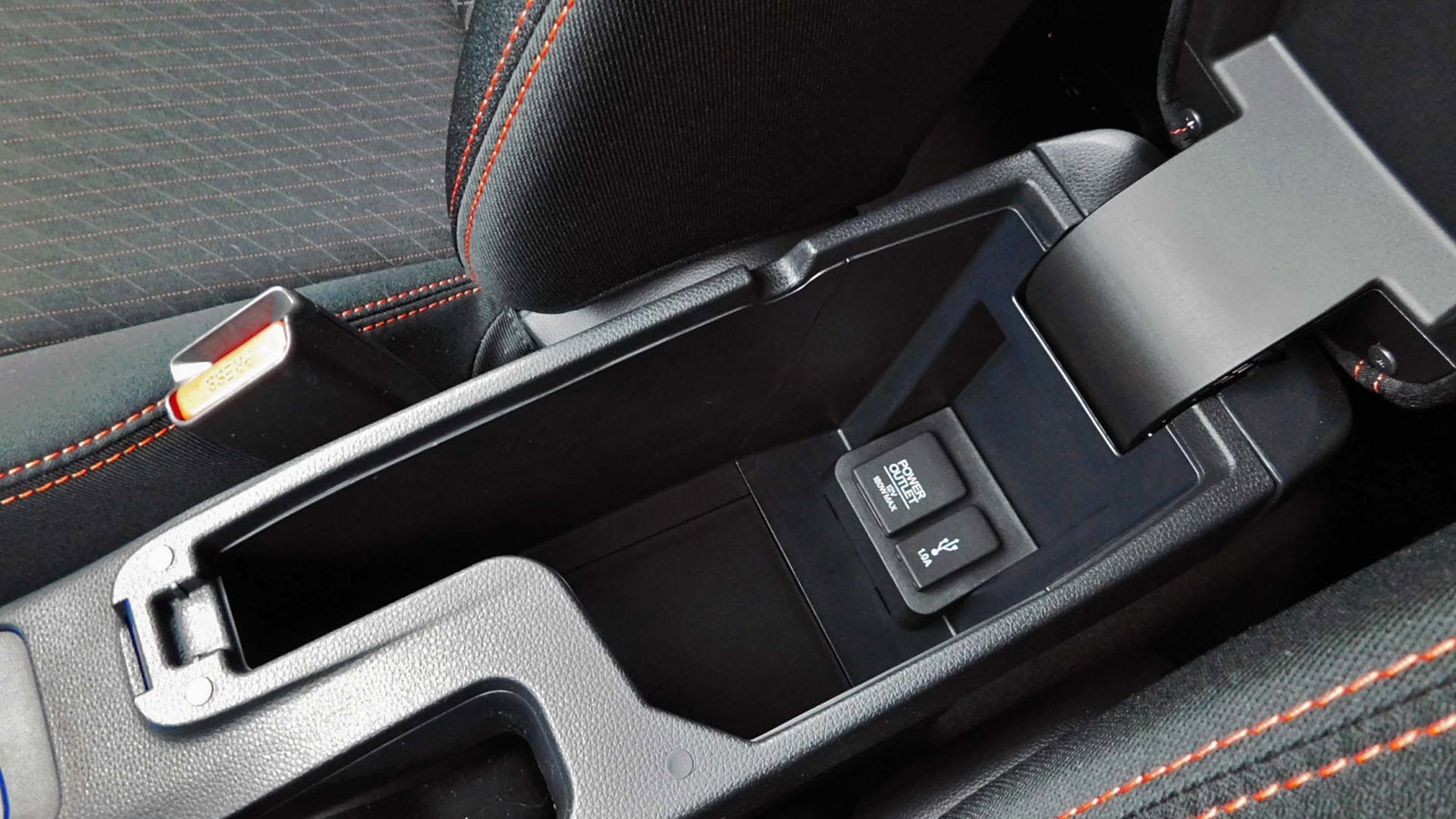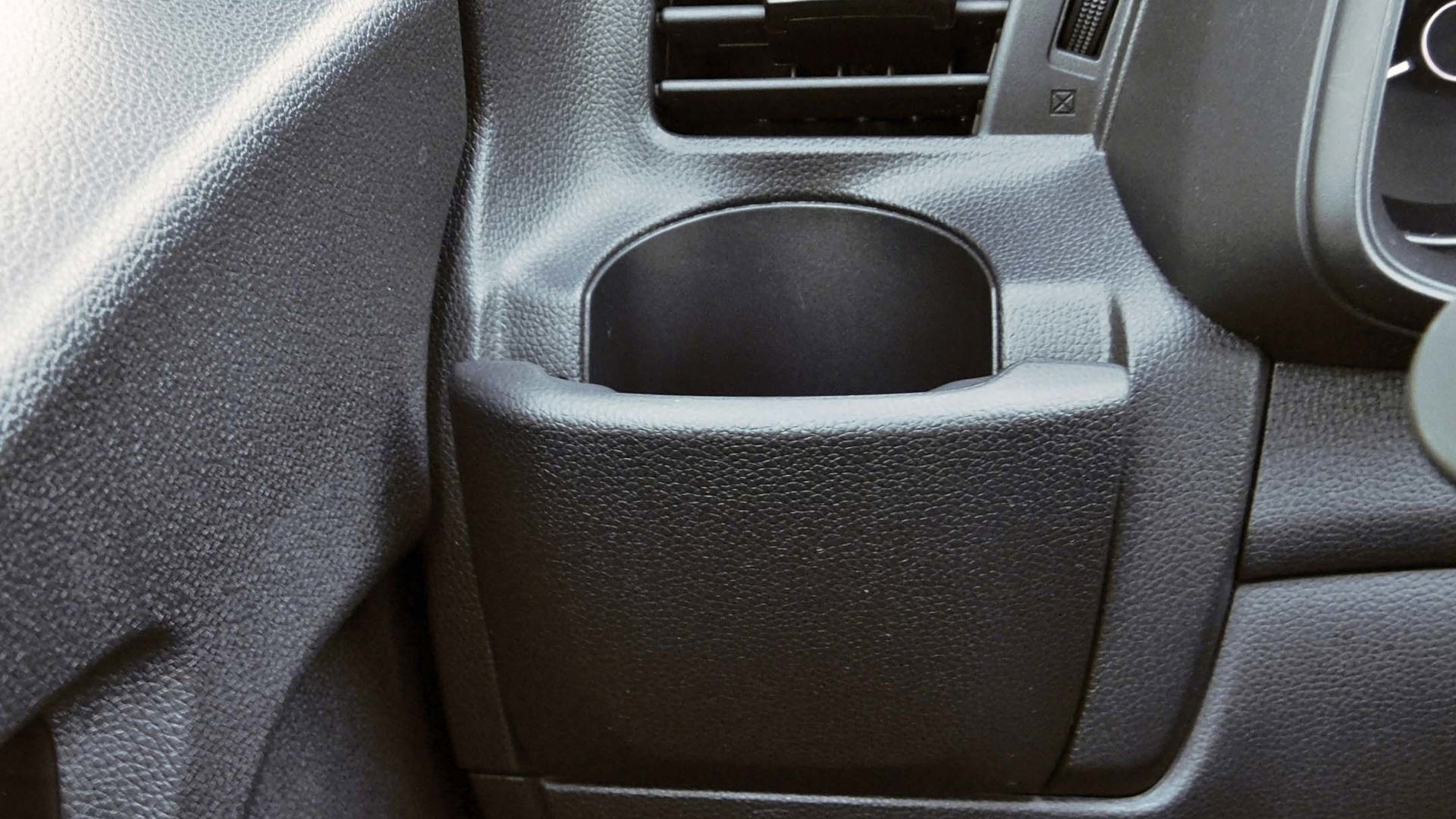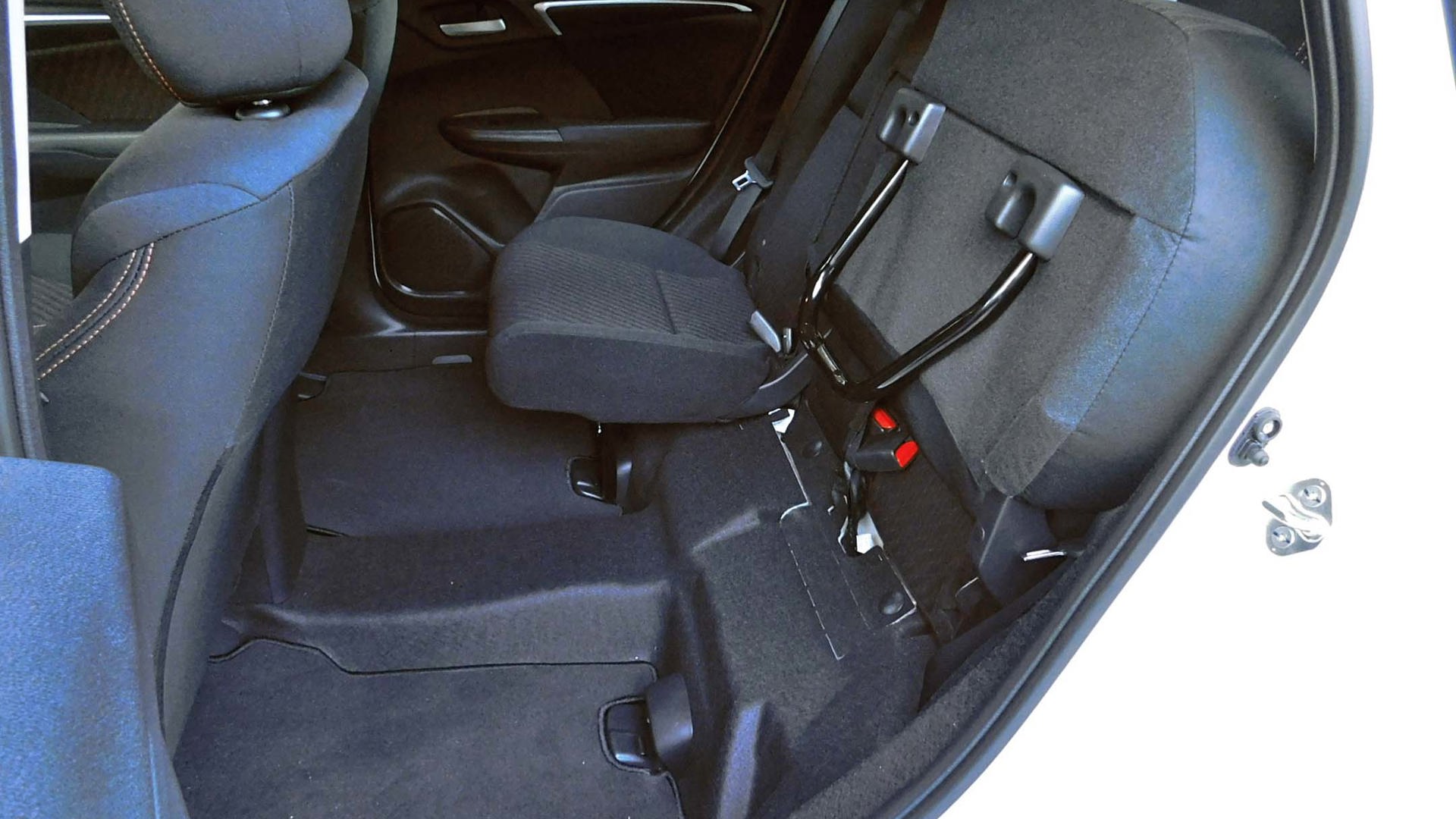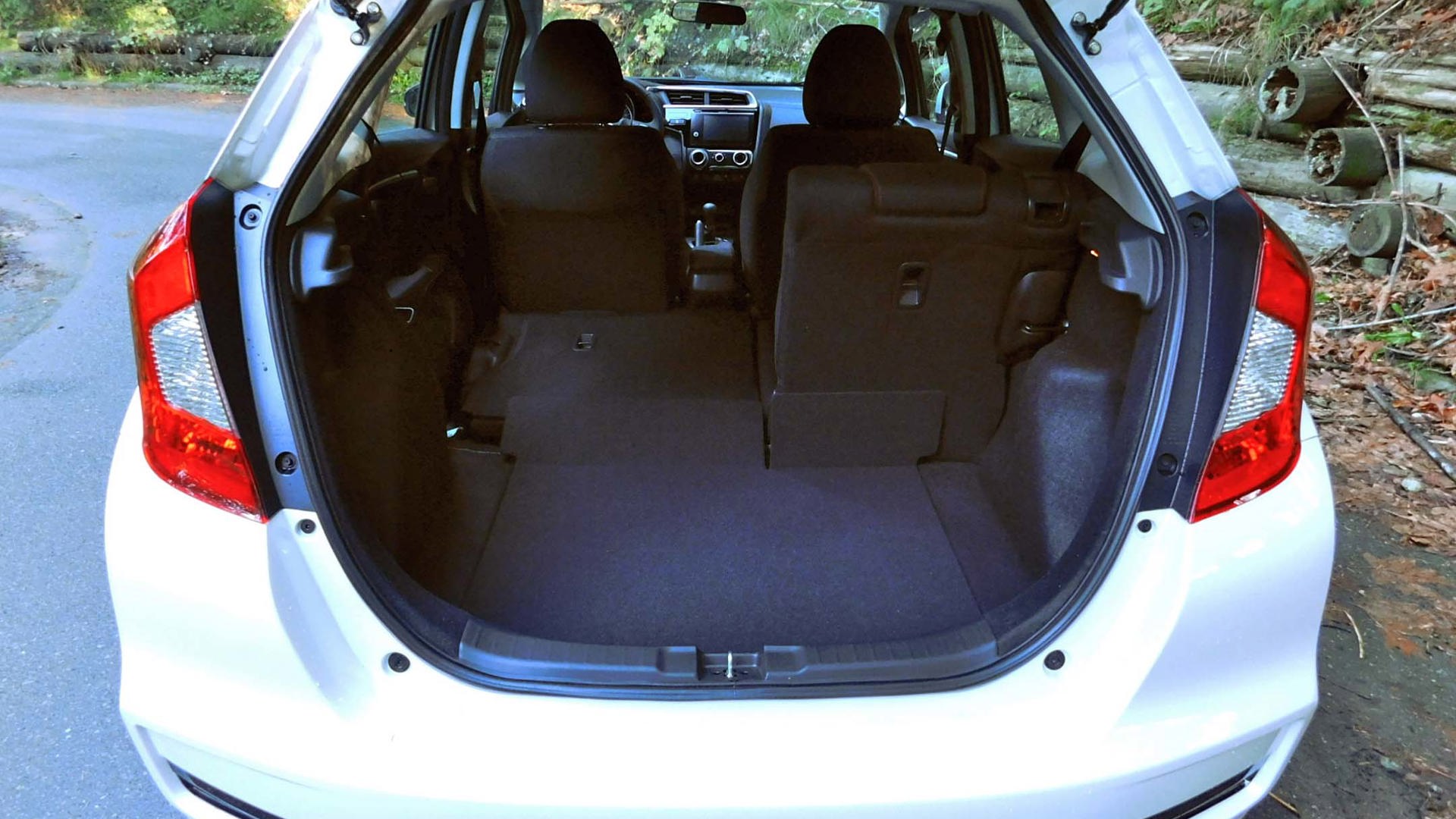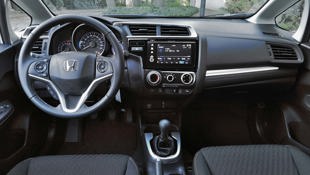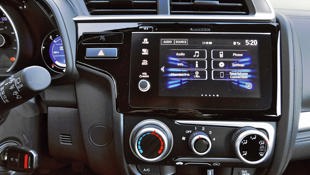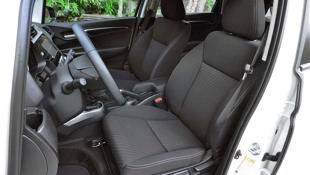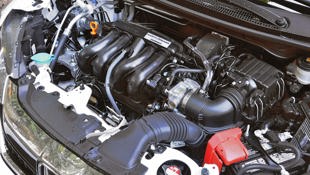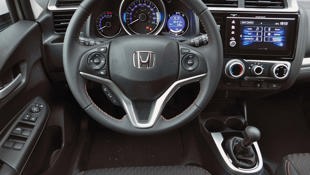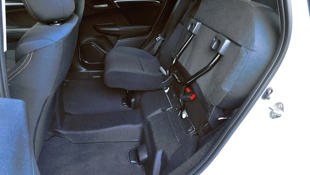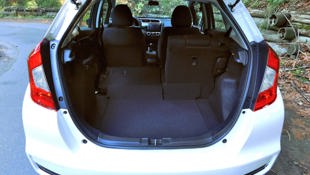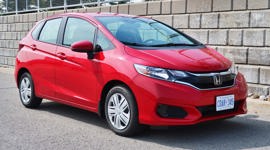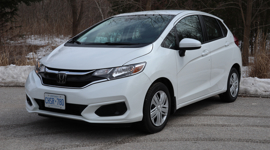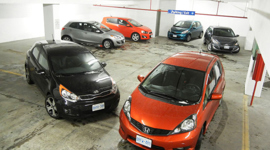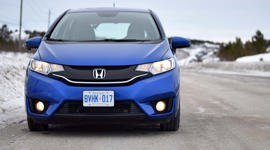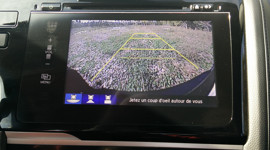 AutoTrader SCORE
AutoTrader SCORE
-
STYLING6/10
-
Safety7/10
-
PRACTICALITY9/10
-
USER-FRIENDLINESS8/10
-
FEATURES7/10
-
POWER7/10
-
COMFORT7/10
-
DRIVING FEEL7/10
-
FUEL ECONOMY8/10
-
VALUE8/10
I’ve always quite liked the Honda Fit. It’s a thoroughly practical, likeable, and liveable little hatchback with surprisingly big interior space and versatile cargo capacity. It’s a vehicle that I’ve recommended to friends, and those who bought one have been happy with the choice.
Inside is where the Fit’s magic has always happened, and that hasn’t changed in the 2018 Fit Sport.
The original Fit was introduced to North America for the 2007 model year, and 2015 saw the introduction of the third-generation model. For 2018 Honda has given the Fit a bit of an update to make it even more likeable and liveable than before. Chief among the changes is a newly available HondaLink 7.0-inch display audio infotainment system with Apple CarPlay and Android Auto compatibility (and a proper volume knob!), newly available Honda Sensing safety and driver assist features, improved insulation for a quieter cabin, and a retuned suspension that works together with additional structural reinforcements to provide improved ride and handling.
No update is complete without a styling refresh, so the 2018 Honda Fit gets a slightly tweaked front end with a bolder chrome grille bar and reshaped fog-light ports. At the rear this is matched with a reshaped bumper and restyled taillights.
Last but not least, there’s a new trim level for 2018: my test car’s Fit Sport trim. The “sport” components are strictly visual, with a more aggressive front spoiler featuring an orange-pinstriped splitter, fog lights, ground-effects side sill trim, a rear diffuser (also orange pinstriped), chrome exhaust tip, and 16-inch gloss-black alloy wheels (a step up from the base 15-inch steel wheels, but offering no more performance than the EX trim’s 16-inch silver or black alloys). These exterior goodies don’t make the Fit any less tall or quirky-looking but they do give it a little street cred to go with the quirkiness. Inside, the Fit Sport gets subtle orange diamond-patterning in the black cloth seat inserts, leather-wrapped steering wheel, leather-wrapped gear knob, and orange contrast stitching throughout.
This, but not that
In addition to the visual upgrades, the Sport trim includes the new HondaLink 7.0-inch infotainment system and 180-watt upgraded audio system, plus standard kit including a multi-angle rearview camera with dynamic guidelines, cruise control, heated front seats, USB input, power locks and windows, tilt and telescoping steering wheel, and more. Available colours for the Sport trim are limited to Orange Fury, Crystal Black Pearl, and White Orchid Pearl.
Sadly, however, the economies of scale mean that what you see is what you get, and what you don’t get with the Honda Fit Sport is the option of adding a power sunroof – that’s for purchasers of EX and EX-L Navi trims only, both of which come bundled with the CVT automatic transmission. Other bits of high-end equipment you’ll have to do without in the Sport trim include the variable intermittent wipers, automatic headlights (all included in the EX trim), automatic climate control, satellite radio, and navigation system (included in the EX-L Navi trim). From the perspective of someone who gravitates towards Sport trim’s more assertive-looking stance, I wouldn’t miss most of this stuff too badly, but the sunroof is a glaring exception (and the automatic headlights and variable intermittent wipers would be nice, too).
You can add the Honda Sensing driver assistance package to the Sport trim, but that again comes bundled with the optional CVT transmission. Presumably Honda’s market research showed that those who prefer to row their own gears also prefer to maintain their own speed, do their own lane-keeping, and take care of their own collision-avoidance braking. (The Honda Sensing package includes adaptive cruise control, lane-keeping assist, lane-departure warning, road-departure mitigation, forward collision warning and collision-mitigation braking.)
On the road
Power for the Honda Fit is from a 1.5L DOHC inline-four that uses Honda’s i-VTEC (variable valve timing) technology and makes 130 hp at 6,600 rpm and 114 lb-ft @ 4,600 rpm. A six-speed manual transmission is standard in lower trims, and a CVT automatic is a $1,300 upgrade. My test car’s manual transmission suits the Sport trim’s visual stance, and I found it to be one of the nicest-shifting manuals this side of a Mazda MX-5 roadster, making it rewarding to row through the gears. For those who prefer an automatic, Honda’s CVT is smooth and efficient, if perhaps not as well suited to the engine’s slightly raspy exhaust note as the manual transmission is. That said, if you want to hear the engine running through programmed “gears”, the Fit Sport’s CVT includes steering-wheel paddle shifters.
Driving around town, the Fit Sport offers good handling and excellent braking, and thanks to the revised suspension and structure the 2018 Fit feels more planted and substantial than I remember from previous models (it scores well in crash ratings, too). Outward visibility is reasonably good thanks to the raised seating position and wide expanse of glass, but I did find the A-pillars quite obstructive (despite the inset pillar windows), and the thick D-pillars likewise make rearward visibility a bit tunnel-like (the back-up camera helps here).
My test car had plenty enough power to chirp the front wheels off the line, and it kept up with city traffic easily. The powertrain works a little harder getting up to highway speeds: the run from zero to 100 km/h takes a little under 10 seconds, and passing power is merely adequate. Once up to speed the Fit is a perfectly happy little cruiser, however, and is more assured-feeling at speed than its tallish profile might imply. Fuel economy is excellent, with city/highway ratings of 8.1/6.6 L/100 km for the manual-equipped car and 7.0/5.9 for the CVT automatic-equipped model. Even while driving with a certain degree of lead-footed enthusiasm I never used more than about 9.5 L/100 km in city driving, and I matched the official highway number at 5.9 L/100 km during a short highway drive.
Interior magic
Inside is where the Fit’s magic has always happened, and that hasn’t changed in the 2018 Fit Sport. The 60/40 split rear seats can fold down as expected to provide a big flat 1,492 L cargo area, and the seat cushions can also flip up, allowing you sit mud-loving dogs on the rear floor, or transport tall and wide items such as houseplants or big-screen TVs. For rear seat passengers there’s abundant legroom, good headroom (at least for my 5'11" frame), and a few degrees of adjustable recline.
The front seats are also plenty roomy, and there’s a surprisingly spacious console bin in between them. The dash features a very nice-looking gauge package, and between this and my test car’s crisp 7-inch infotainment display the overall impression is remarkably upscale. Soft-touch materials are limited to a rubbery passenger-side dash cover, but the rigid plastics that are used elsewhere all look good and are well fitted together, the switchgear is top-notch, and all the major controls fall easily to hand. The new infotainment system is fast, simple, and intuitive, and for most people its Apple CarPlay and Android Auto connectivity renders a factory navigation system unnecessary.
A niche standout
With a starting price of $15,190 (not including delivery charges) for the base DX model, and my Sport trim test car priced at $19,590, the Fit occupies a crowded and competitive segment. It’s not the most fuel efficient or engaging of the bunch (the nods there go to the Toyota Prius C and Ford Fiesta respectively), nor is it the most stylish, even when adorned with the Sport trim’s look-fast bits (the new 2018 Kia Rio5 takes the beauty prize in my opinion). Where the Fit does stand out, however, is with segment-leading practicality and cargo versatility. If day-to-day usability is high on your list of shopping criteria, that makes the Fit a must-see contender.
| Engine Displacement | 1.5L |
|---|---|
| Engine Cylinders | I4 |
| Peak Horsepower | 130 hp @ 6,600 rpm |
| Peak Torque | 114 lb-ft @ 4,600 rpm |
| Fuel Economy | 8.1/6.6/7.4 L/100 km city/hwy/cmb |
| Cargo Space | 470 L/1,492 L seats down |
| Model Tested | 2018 Honda Fit Sport M/T |
| Base Price | $19,590 |
| A/C Tax | $100 |
| Destination Fee | $1,595 |
| Price as Tested | $21,585 |
|
Optional Equipment
$300 – White Orchid Pearl paint $300
|
|
